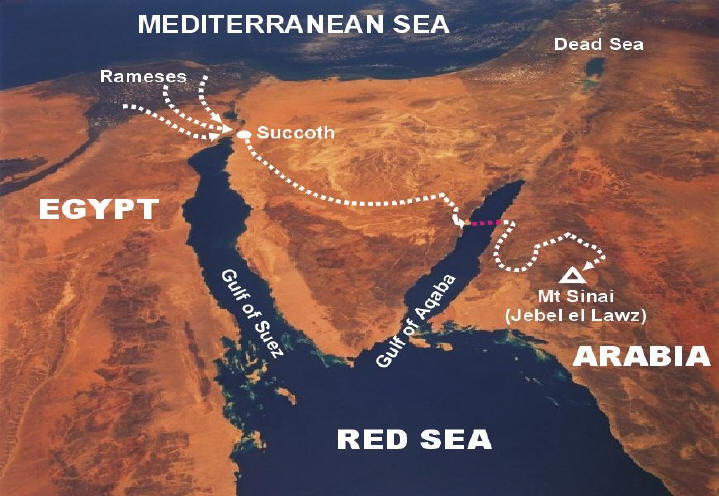Ron Wyatt (1933-1999) was a nurse anesthetist from Tennessee. As an amateur archeologist, he financed many of his own expeditions to the Middle East over many years. He claimed discovery of, or at least involvement in bringing to light, many biblical sites and artifacts. According to Wikipedia,
By the time of his death in 1999, Wyatt claimed to have discovered several sites and artifacts related to the Bible and biblical archaeology. These included:
- Noah’s Ark (the Durupınar site, located approximately 29 kilometres (18 mi) south of Mount Ararat)[2]
- Anchor stones (or drogue stones) used by Noah on the Ark[3]
- The post-flood house, grave markers and tombs of Noah and his wife[4]
- The location of Sodom and Gomorrah and the other Cities of the Plain: Zoar, Zeboim and Admah[5]
- Sulfur/brimstone balls from the ashen remains of Sodom and Gomorrah[6]
- The area of Djoser’s pyramid complex believed to be the remains of Joseph’s grain distribution bins used during the seven-year famine[7]
- The Tower of Babel site (in southern Turkey)[8]
- How the Egyptians may have built the pyramids[9]
- The site of the Israelites’ crossing of the Red Sea (located in the Gulf of Aqaba)[10]
- Chariot wheels and other relics of the army of Pharaoh at the bottom of the Red Sea[11]
- The site of the biblical Mount Sinai (in Saudi Arabia at Jabal al-Lawz)[12]
- A chamber at the end of a maze of tunnels under Jerusalem containing artifacts from Solomon’s Temple, including the Ark of the Covenant[13]
- The site of the Crucifixion of Jesus[14]
- Christ’s blood in an “earthquake crack” beneath the crucifixion site, the DNA of which, according to Wyatt, contained only 24 chromosomes, 23 from his mother and the other from God, rather than 46[15]
- Burial pots off the coast of Ashkelon[16]
Many of Wyatt’s claims have been gradually corroborated and accepted by others. For example, just this week, Fox News reported the following story concerning the suggested site of Mount Sinai in Saudi Arabia, in the area of Jabal al-Lawz, finally being opened up for tourism:
Saudi Arabia opens tourism to ancient biblical sites: 'The atmosphere is changing’
This recent change in attitude by the Saudis stands in contrast to their treatment of Ron Wyatt and his sons in 1984, when the Saudis arrested them while they were working illegally at that site—which Wyatt believed to be the location of the true Mount Sinai–in the closed Kingdom of Saudi Arabia. The Saudis accused them of spying for Israel, and held them prisoner for several months, as discussed in an NBC Morning News interview upon their release from Saudi Arabia, seen within this old video:
Back then, the Saudis subsequently surrounded the site area with barbed wire and army guard towers. Now, 35 years later, it would seem they believe it is the genuine site, as per Wyatt’s evidence, and their own research; and have now (almost unbelievably) opened it up to limited religious tourism.
Of course, the traditional site of Mount Sinai had been believed to be in the “Sinai” Peninsula of Egypt. But Wyatt believed differently. Here is a depiction of the alternative route of the Exodus, taken from this web site:
Wyatt believed that since Moses fled to Midian, and since Midian and Horeb were in the same location–east of the Gulf of Aqaba in the northwestern Arabian Desert–that the crossing site was Aqaba, and Mount Sinai would be found in what is now Saudi Arabia.
Wyatt’s physical evidence (horse, human, and chariot artifacts in coral formations, etc.) of the Red Sea Crossing over an underwater land bridge traversing the Gulf of Aqaba chasm, starting at Nuweiba beach, has been confirmed and promoted by Lennart Möller, a professor of molecular biology and environmental medicine at the Karolinska Institute in Sweden (the awarder of the Nobel prize in medicine), in the following excellent documentary, “The Exodus Revealed: Searching for the Red Sea Crossing”:
Also, by Tim Mahoney in his Patterns of Evidence film series, as seen, for example, on Netflix. (And on which Professor Möller, with whom I have corresponded, consulted.)
I first started following Ron Wyatt’s work in the early 80’s. I saw him as a humble brother, who was primarily concerned to see lost souls saved. Wyatt used to say that since he was clearly “a nobody” (1 Cor. 1:27), it was obviously God Himself who was at work in guiding these discoveries, and God alone who would get all the credit.
